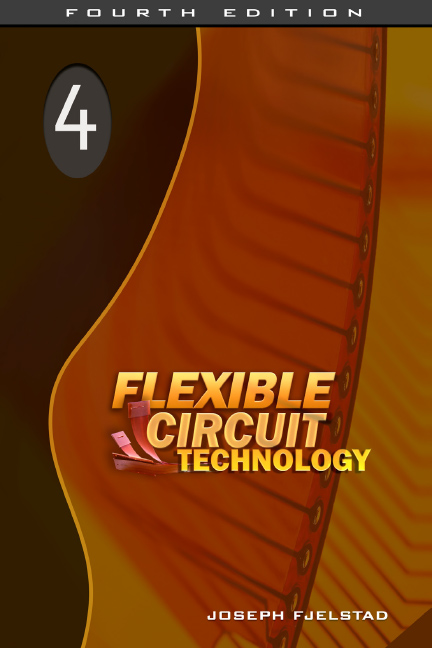Flexible Circuit Technology, 4th Edition provides the basic knowledge required to design, manufacture and use flexible circuits while avoiding many of the potential problems that may be encountered by those who attempt to learn from their own experiences. Previous editions of the book have proved a valuable resource for those new to the technology and have served as a quick reference for those with a working knowledge of flexible circuits and their applications.
Flexible circuit technology is squarely in the sights of circuit designers around the globe and is a key enabling technology for products ranging from simple consumer goods to extraterrestrial spacecraft. It is also opening new doors in the realm of high speed signal managements where higher performance is demanded while reduced power is required for products that are redefining and reshaping our collective thoughts about the possibilities in the world of electronic products.
This edition is significantly expanded over the 3rd Edition and subsequent Addendum, with additional chapters and content contributed by some of the industry’s best technologists. The book brings deserved attention to continuing advances in technology, provides more depth and detail than before and, for the first time, offers chapters on printed electronics and stretchable circuits (AKA elastronics), which are areas of high interest for present and future growth.
 Joe Fjelstad is a 45-year veteran of the electronic interconnection industry and serial entrepreneur. He is also founder and president of Verdant Electronics, Inc. The company focused on the development of lower cost, more environmentally friendly and more reliable electronic products to meet the needs of both the most advanced products, as well as products for the world’s most disadvantaged peoples. A globally recognized author or coauthor of several books on electronic interconnection technologies, including Flexible Circuit Technology, 4th Edition; Chip Scale Packaging for Modern Electronics; and An Engineer's Guide to Flexible Circuits. He is also a magazine columnist and commentator, educator and innovator in the field of electronic interconnection and packaging technologies. A frequent keynote speaker at conferences around the world, Mr. Fjelstad has been the recipient of a number of industry and corporate awards over his career. As an innovator, he holds more than 180 issued U.S. patents and numerous international patents issued or pending.
Joe Fjelstad is a 45-year veteran of the electronic interconnection industry and serial entrepreneur. He is also founder and president of Verdant Electronics, Inc. The company focused on the development of lower cost, more environmentally friendly and more reliable electronic products to meet the needs of both the most advanced products, as well as products for the world’s most disadvantaged peoples. A globally recognized author or coauthor of several books on electronic interconnection technologies, including Flexible Circuit Technology, 4th Edition; Chip Scale Packaging for Modern Electronics; and An Engineer's Guide to Flexible Circuits. He is also a magazine columnist and commentator, educator and innovator in the field of electronic interconnection and packaging technologies. A frequent keynote speaker at conferences around the world, Mr. Fjelstad has been the recipient of a number of industry and corporate awards over his career. As an innovator, he holds more than 180 issued U.S. patents and numerous international patents issued or pending.
Chapter Summaries
-
Chapter 1
Flexible Circuit Technology Overview
Chapter 1 outlines the objectives and scope of the book. It defines flexible circuits in general terms and in terms of its static and dynamic applications.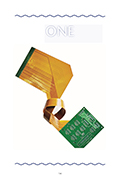
-
Chapter 2
Flexible Circuit Technology Past, Present and Future
Chapter 2 describes the history of flexible circuits and provides a fascinating first-hand, pioneering account of the early days of the flex circuit industry by Thomas Stearns, a noted flex circuit engineer and co-inventor of the earliest rigid flex interconnection constructions.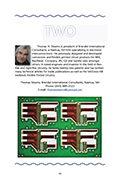
-
Chapter 3
Flex Circuit Drivers, Benefits & Applications
Chapter 3 describes some of the many benefits of flex circuits including: reduced size, reduced weight, decreased assembly time, assembly error reduction, increased reliability and many more.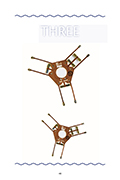
-
Chapter 4
Process Challenges and System Applications in Flex
Chapter 4 describes many of the challenges associated with flexible circuit technology and potential ways to deal with them.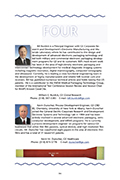
-
Chapter 5
Flexible Circuit Material
Chapter 5 brings into focus the desirable characteristics for flexible circuit laminates, basic construction elements for manufacture, flexible circuit material formats and properties, adhesives, metal foil, metallic coatings and other conductor material.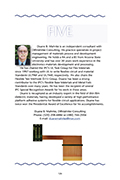
-
Chapter 6
Implementing Flexible Circuit Technology
Chapter 6 outlines a simple, thirteen-step approach to successfully implementing flexible circuits into new and existing products.
-
Chapter 7
Practical Design Guidelines for Flex
Chapter 7 provides a comprehensive overview of the multifaceted process of flexible circuit design. It starts with key preliminary steps such as understanding and setting tolerances, using CAD design tools and special design considerations.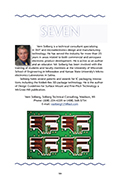
-
Chapter 8
Guide to Reliable Static and Dynamic Flexing
Chapter 8 provides design necessities in terms of conductor layout, flex circuit stack-up and material selection, as well as factors including: assembly, adjustment and repair procedures; final circuit geometry; and number of flexures during functional life.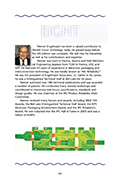
-
Chapter 9
Flex Circuit Manufacturing Processes
Chapter 9 provides basic information on flex circuit fabrication that will aid in understanding the complexity of the processes involved in flex circuit construction.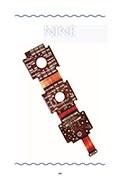
-
Chapter 10
Flexible Circuit Assembly
The areas of assembly detailed in chapter 10 include: flex circuit and component preparation; surface finishes for solder connections; assembly process fixtures and tools; component placement; interconnecting and joining processes; rework; solder joint inspection; and wire bonding.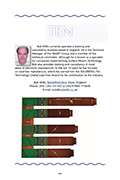
-
Chapter 11
Printed Electronics
Chapter 11 details of the long history of the “new” technology of printed electronics. The chapter includes a review of traditional printing technologies such as screen printing, rotogravure printing, flexograph printing and offset printing.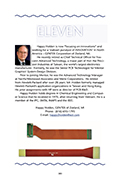
-
Chapter 12
Solderless Assembly Processes for Flexible Circuits
Chapter 12 provides a detailed look at solderless assembly processes and their many advantages. Additionally, it relates solderless assembly concepts specifically to flexible circuits and shows the almost unlimited future potential for this technology.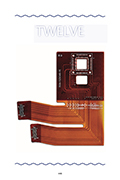
-
Chapter 13
Stretchable Circuits
Chapter 13 describes the methods, materials, conductors and processes used to fabricate stretchable circuits and also details applications being explored for use by stretchable circuits, including apparel, medical monitoring and diagnostic equipment, where the use of conventional PCBs becomes problematic because there is a need to comfortably integrate the circuit on a non-flat surface.
-
Chapter 14
Inspection and Test of Flex Circuits
Chapter 14 details the types of inspection and testing for flexible circuits and their purposes. Raw material testing information includes physical, chemical, electrical and environmental testing. Testing and inspection of the end product includes visual inspection, dimensional measurement accuracy, physical testing, construction integrity, pre- and post-stress evaluation and more.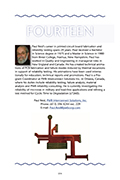
-
Chapter 15
Plated Through-Hole Reliability
Chapter 15 supplies an overview of some of the more frequently used bare board level reliability tests that are performed to increase confidence that the finished product will perform to expectations. It includes a discussion of the various methods that augment such testing.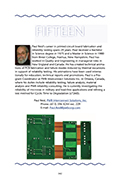
-
Chapter 16
Documentation Needs for Flex Circuits
Good documentation is critical to accurate communication between the flex circuit customer and vendor, yet it is not always given the attention it deserves. Chapter 16 reviews documentation needs and identifies important and commonly-cited elements related to design to ensure accurate, complete manufacture of the design that will meet end product requirements.
-
Chapter 17
Flexible Circuit Standards and Environmental
Chapter 17 lists and briefly describes the key standards and specifications that are relevant to the manufacture and use of flexible printed wiring boards as well as the raw materials used in their construction. Standards and specifications from IPC, JPCA, ASTM and the military are included.


